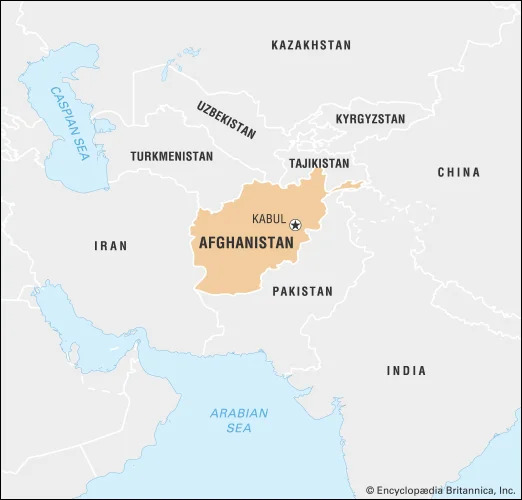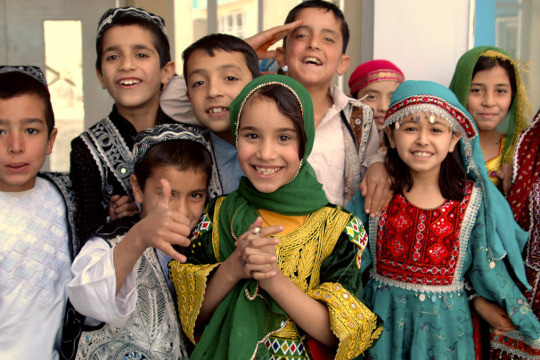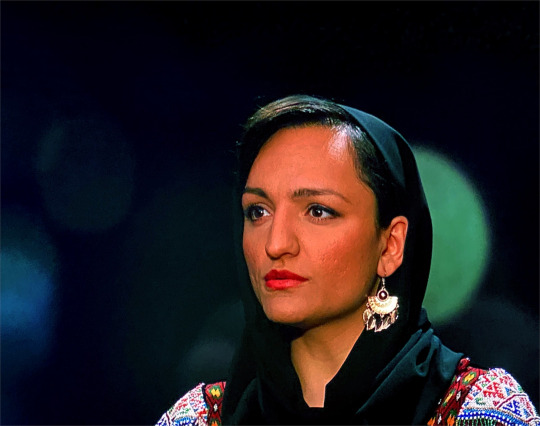#Aśvakan
Explore tagged Tumblr posts
Text
"The etymological view supported by numerous noted scholars is that the name Afghan evidently derives from Sanskrit Aśvakan, or the Assakenoi of Arrian, which was the name used for ancient inhabitants of the Hindu Kush. Aśvakan literally means "horsemen", "horse breeders", or "cavalrymen" (from aśva or aspa, the Sanskrit and Avestan words for "horse")."
"The Aśvaka (Sanskrit: अश्वक), also known as the Ashvakan, Aśvakayana, or Asvayana and sometimes Latinised as Assacenii, Assacani, or Aspasioi, were a people who lived in what is now eastern Afghanistan and northern Pakistan. The region in which they lived was also called Aśvaka."
#Afghan#etymology#language#Sanskrit#Aśvakan#Ashvaka#Assakenoi#Hindu Kush#horses#Avestan#assacani#Afghanistan#Pakistan
30 notes
·
View notes
Text
dards - war-like north westernmost “indo” aryans & asvas
- Strabo and Pliny mentioned war-like people Dardae.
- The term "Dardic" is only a geographic convention used to denote the northwesternmost group of Indo-Aryan languages (spoken in northern Pakistan, northwestern India and parts of northeastern Afghanistan)
- Usage of the term is curiously parallel to the Sanskrit usage, where it connoted nonspecific ferocious outsiders living in the mountains beyond the borders of the region.
- Dardic languages contain absolutely no features which cannot be derived from old [Indo-Aryan language]. They have simply retained a number of striking archasisms, which had already disappeared in most Prakrit dialects... There is not a single common feature distinguishing Dardic, as a whole, from the rest of the [Indo-Aryan] languages... Dardic is simply a convenient term to denote a bundle of aberrant [Indo-Aryan] hill-languages which, in their relative isolation, accented in many cases by the invasion of Pathan tribes, have been in varying degrees sheltered against the expand influence of [Indo-Aryan] Midland (Madhyadesha) innovations, being left free to develop on their own
- Due to their geographic isolation, many Dardic languages have preserved archaisms and other features of Old Indo-Aryan. These features include three sibilants, several types of clusters of consonants, and archaic or antiquated vocabulary lost in other modern Indo-Aryan languages.
- Kalasha and Khowar are the most archaic of all modern Indo-Aryan languages, retaining a great part of Sanskrit case inflexion, and retaining many words in a nearly Sanskritic form.[29][30] For example at’hi "bone" in Kalasha is nearly identical to asthi in Sanskrit[31] and ašrú "tear" in Khowar is identical to the Sanskrit word

- The Sanskrit term aśva, Avestan aspa, and Prakrit assa means horse. The name Aśvaka/Aśvakan or Assaka is derived from the Sanskrit Aśva or Prakrit Assa and it denotes someone connected with the horses, hence a horseman, or a cavalryman or horse breeder. The Aśvakas were especially engaged in the occupation of breeding, raising and training war horses, as also in providing expert cavalry services.[citation needed]
- The name of the Aśvakan or Assakan has been preserved in that of the modern Afghān.
- According to philologist J.W. McCrindle, the name Aśvaka is also "distinctly preserved" in the name of the Esapzai (or Yusufzai) tribe of Pashtuns. McCrindle noted: "The name of the Aśvaka indicates that their country was renowned in primitive times, as it is at the present day, for its superior breed of horses.
- The fact that the Greeks translated their name into "Hippasioi" (from ἵππος, a horse) shows that they must have been aware of its etymological signification."
- Ancient Greek historians who documented the exploits of Alexander the Great refer to the Aspasioi and Assakenoi (Ἀσσακηνοί) tribes among his opponents. The Assakenoi fielded 2,000 cavalry, 30 elephants and 30,000 infantry against Alexander during his campaign in India, which began in 327 BCE, but they eventually had to surrender after losses at places such as Beira, Massaga and Ora
- Diodorus recorded the strength of the Aśvaka opposition, noting that the women took up arms along with the men, preferring "a glorious death to a life of dishonour".[21]Queen Cleophis was the main leader of Ashvaka during their war against Alexander.
- The Asvayanas have been attested to be good cattle breeders and agriculturists by classical writers. Arrian said that, during the time of Alexander, there were a large number of bullocks - 230,000 - of a size and shape superior to what the Macedonians had known, which Alexander captured from them and decided to send to Macedonia for agriculture
#Karakoram#kashmir#hindukush#himalayas#everest#india#pakistan#jammu#afghanistan#mountains#history#dard#dardistan#indoeuropean#hindi#sanskrit#aryan invasian#south asia#greek#strabo#pliny#ancient history#dardic#north india#vadakkan#vadakku#aryan#indo aryan#hind#hindu
0 notes
Text
Discovering the world
Afghanistan 🇦🇫
Basic facts
Official name: د افغانستان اسلامي امارت (Də Afġānistān Islāmī Imārat)/امارت اسلامی افغانستان (Imārat-i Islāmī-yi Afghānistān) (Pashto/Persian) (Islamic Emirate of Afghanistan)
Capital city: Kabul
Population: 41.1 million (2023)
Demonym: Afghan
Type of government: unitary theocratic Islamic emirate
Head of state: Hibatullah Akhundzada (Supreme Leader)
Head of government: Abdul Kabir (Prime Minister)
Gross domestic product (purchasing power parity): $67.13 billion (2021)
Gini coefficient of wealth inequality: 65.5% (high) (2019)
Human Development Index: 0.478 (low) (2021)
Currency: afghani (AFN)
Fun fact: Women in Afghanistan earned the right to vote in 1919, one year before their counterparts in the United States.
Etymology
Some scholars suggest that Afghān is derived from the Sanskrit word Aśvakan, which literally means “horsemen” and was the name used for ancient inhabitants of the Hindu Kush mountain range.
“-stan” is a Persian suffix meaning “place of”, so “Afghanistan” translates to “land of the Afghans” or “land of the Pashtuns”.
Geography
Afghanistan is located between Central and South Asia and borders Uzbekistan to the north, China and Tajikistan to the northeast, Pakistan to the east and south, Iran to the southwest, and Turkmenistan to the northwest.

There are several climates: Mediterranean-influenced hot-summer humid continental and tundra in the northeast and center, hot-summer Mediterranean in the west, hot desert in the south, and cold steppe in the rest of the country. Temperatures range from −4 °C (24.8 °F) to 42 °C (107.6 °F). The average annual temperature is 12.6 °C (54.6 °F).

The country is divided into 34 provinces (wilāyatuna), which are further divided into 421 districts (wuləswāləi/wuləswālī). The largest cities in Afghanistan are Kabul, Kandahar, Herat, and Mazar-i-Sharif.

History
3300-2350 BCE: Helmand culture
678-550 BCE: Median kingdom
550-330 BCE: Achaemenid Empire
330-305 BCE: Seleucid Empire
305-185 BCE: Maurya Empire
185-145 BCE: Indo-Greek Kingdom
145-124 BCE: Indo-Scythian Kingdom
124 BCE-19 CE: Parthian Empire
19-226: Indo-Parthian Kingdom
30-375: Kushan Empire
224-365: Sasanian Empire
320-450: Kidarites
450-665: Hephthalites
665-822: Turk Shahis
822-870: Hindu Shahis
870-977: Saffarid dynasty
977-1186: Ghaznavid Empire
1186-1215: Ghurid dynasty
1215-1219: Anushtegin dynasty
1219-1370: Mongol Empire
1290-1320: Khalji dynasty
1370-1507: Timurid Empire
1501-1736: Safavid Empire
1501-1785: Khanate of Bukhara
1520-1554: Arghun dynasty
1526-1857: Mughal Empire
1709-1738: Hotak dynasty
1738-1747: Afsharid dynasty
1747-1823: Durrani Empire
1747-1892: Maimana Khanate
1793-1863: Emirate of Herat
1818-1855: Emirate of Kandahar
1823-1855: Emirate of Kabul
1838-1842: First Anglo-Afghan War
1839-1842: Durrani Kingdom
1842-1926: Emirate of Afghanistan
1863-1869: First Afghan Civil War
1878-1880: Second Anglo-Afghan War
1879-1919: British protectorate of Afghanistan
1919: Third Anglo-Afghan War
1926-1973: Kingdom of Afghanistan
1928-1929: Second Afghan Civil War
1944-1947: Khost disturbances
1973-1978: Republic of Afghanistan
1978-1987: Democratic Republic of Afghanistan
1979-1989: Soviet-Afghan War
1987-1992: Republic of Afghanistan
1989-1992: Third Afghan Civil War
1992-1996: Islamic State of Afghanistan; Fourth Afghan Civil War
1996-2001: Islamic Emirate of Afghanistan; Fifth Afghan Civil War
2001-2004: Afghan Interim and Transitional Administration
2004-2021: Islamic Republic of Afghanistan
2021-present: Islamic Emirate of Afghanistan
Economy
Afghanistan mainly imports from Iran, China, and Pakistan and exports to India, Pakistan, and China. Its top exports are grapes, nuts, and carpets.
Its service sector contributes the most to the GDP (56%), followed by agriculture (23%) and industry (21%). Nevertheless, agricultural production is the backbone of Afghanistan’s economy, employing about 40% of the workforce.

Afghanistan is a member of the Economic Cooperation Organization, the Organization of Islamic Cooperation, and the South Asian Association for Regional Cooperation.
Demographics
Afghanistan recognizes fourteen ethnic groups, of which the largest ones are the Pashtun (52%), Tajik (27%), Hazara (9%), and Uzbek (8%). The official religion is Islam, practiced by 99% of the population, 90% of which is Sunni.
Afghanistan has a negative net migration and a fertility rate of 4.6 children per woman. Only 26% of the population lives in cities. Life expectancy is 66 years and the median age is 18.4 years. The literacy rate is 43%.

Languages
The official languages of the country are Dari, often referred to as Farsi and spoken by 78% of the population, and Pashto, spoken by 50% of the population.

Other commonly-spoken languages are Uzbek (10%), English (5%), Turkmen (2%), and Urdu (2%).
Culture
Family is the pillar of life in Afghanistan, and family’s interests supersede personal desires and obligations to one’s ethnic group. Pashtuns follow the Pashtunwali (the Pashtun lifestyle), whose key tenets are hospitality, the provision of sanctuary to those seeking refuge, and revenge for the shedding of blood.
Men wear a long tunic (kameez), pants (shalwar), and a peaked fur hat (karakul) or a flat, round-topped woolen hat (pakol). Women wear a long robe and a long veil (chador).

Architecture
Afghanistan’s architecture reflects the country’s location at the crossroads of Central Asia, the Indian subcontinent, and the Iranian plateau, as well as Buddhist, Greek, Islamic, and Zoroastrian influences.
It is characterized by stone foundations, brick and timber frames, wooden beams, mud and bamboo roofs, and mud and straw walls.

Cuisine
The Afghan diet is based on dairy products, meat, rice, and vegetables. Typical dishes include aushak (pasta dumplings filled with chives with tomato sauce and yogurt), chapli kabab (a minced kebab with spices in the shape of a patty), qabeli palaw (steamed rice with almonds, carrots, and raisins, and marinated lamb meat), qormah (an onion- and tomato-based stew served with rice), and qoroot (small balls of dehydrated yogurt with salt).

Holidays and festivals
Afghanistan’s year starts with Nowruz, the Persian New Year. It is celebrated with music, dance, and buzkashi tournaments, during which horse-mounted players attempt to place a goat carcass into a goal.

Yalda commemorates the ancient goddess Mithra and marks the longest night of the year on the eve of the winter solstice. Families gather together to recite poetry and eat fruits.

Other religious festivals include Ashura, which mourns the death of prophet Muhammad’s grandson of prophet Muhammad, Husayn ibn Ali; Ramadan, a period of fasting, prayer, and reflection, and Eid al-Fitr, which marks the end of Ramadan.

Landmarks
There are two UNESCO World Heritage Sites: Cultural Remains of the Bamyan Valley and Minaret and Archaeological Remains of Jam.

Other landmarks include Bagh-e Babur, gardens with terraced buildings, a mosque, and the tomb of the first Mughal emperor; the town of Balkh; Band-e Amir National Park, the Citadel of Alexander, and the Great Mosque of Herat.

Great Mosque of Herat
Famous people
Ahmad Khan Mahmidzada - actor
Azita Ghanizada - actress
Fatima Bhutto - writer
Jem Cohen - filmmaker
Naghma - singer
Najibullah Zadran - cricketer
Qahar Asi - poet
Siddiq Barmak - movie director and producer
Vida Samadzai - actress and model
Zarifa Ghafari - youngest mayor

Zarifa Ghafari
You can read about life in Afghanistan before the 2021 Taliban takeover here and watch a documentary about life under the Taliban here.
4 notes
·
View notes
Text
"The Sanskrit term aśva, Avestan aspa, and Prakrit assa means horse. The name Aśvaka/Aśvakan or Assaka is derived from the Sanskrit Aśva or Prakrit Assa and it denotes someone connected with the horses, hence a horseman, or a cavalryman or horse breeder. The Aśvakas were especially engaged in the occupation of breeding, raising and training war horses, as also in providing expert cavalry services.
The name of the Aśvakan or Assakan has been preserved in that of the modern Afghān.
According to philologist J.W. McCrindle, the name Aśvaka is also "distinctly preserved" in the name of the Esapzai (or Yusufzai) tribe of Pashtuns. McCrindle noted: "The name of the Aśvaka indicates that their country was renowned in primitive times, as it is at the present day, for its superior breed of horses. The fact that the Greeks translated their name into "Hippasioi" (from ἵππος, a horse) shows that they must have been aware of its etymological signification."
#sanskrit#Avestan#Prakrit#Aśvaka#Ashvaka#Aśvakan#history#Afghan#Assakenoi#assacani#language#etymology
24 notes
·
View notes
Text
"Diodorus recorded the strength of the Aśvaka opposition, noting that the women took up arms along with the men, preferring "a glorious death to a life of dishonour". Queen Cleophis was the main leader of Ashvaka during their war against Alexander.
Cleophis (Sanskrit: Kripa ) was a ruler and key figure in the war between the Ashvaka people and Alexander the Great. Cleophis was the mother of Assacanus, the Ashvaka's war-leader at the time of Alexander's invasion in 326 BCE. After her son's death in battle, Cleophis assumed command and negotiated a settlement that allowed her to retain her status.
The Ashvaka (from the word Ashva, meaning "horse" in Sanskrit, called Assacani in Greek) were an independent people who lived in parts of what is now the Swat and Buner valleys in modern-day Pakistan. These highlanders were rebellious, fiercely independent clans who resisted subjugation."
7 notes
·
View notes